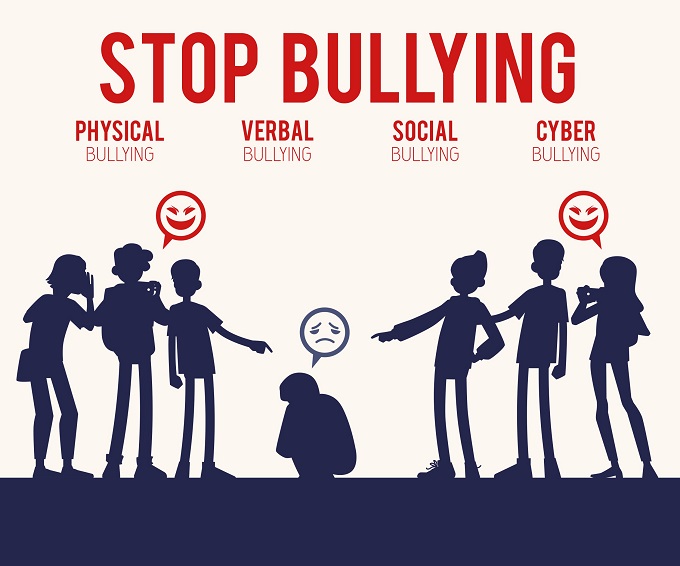Anti-Bullying: Create a safe school environment

Between horrific stats on New Zealand’s youth suicide rate and the vast prevalence of bullying in our schools, we seem to have a crisis on our hands despite nationwide push to prioritise anti-bullying programmes.
It raises the question, what more can we do?
This article originally appeared in our Term 2 issue, which you can find online here.
One Invercargill mother made headlines for organising an anti-bullying protest after a bullying incident at her daughter’s school, Aurora College, which resulted in two teenagers being arrested and charged. The incident took place off school grounds but was videoed and posted online. This mother’s protest took place on May 17, lining up with Pink Shirt Day and other schools could follow suit. The NZ site for Pink Shirt Day houses a rake of resources for schools, including classroom activities, Mufti Day packs, fundraising ideas and toolkits.
But raising awareness only goes so far and the statistics are certainly a wake-up call. Unicef claims one-in-two New Zealand children are bullied in school at least once a month. The 2015 CensusAtSchool NZ reveals students between nine and 18 cite verbal abuse as the biggest bullying problem in schools, while the Ministry of Education reveals 60 percent of Year 5 maths and science students say they are bullied on a monthly basis at least (24 percent said weekly).
The estimated incidence of cyberbullying in New Zealand is the third highest of the 29 countries that participated in the recent Ipsos Global Advisor Cyberbullying Study, with more than a quarter of New Zealand parents or caregivers saying their child has experienced cyberbullying at some point. Additionally, over 25 percent of Kiwi parents or caregivers indicated that their child has been a victim of cyberbullying at some point in their lives.
Could there be a correlation between bullying and mental health? In a unique study on digital self-harm, research from online safety organisation Netsafe this year revealed six percent of New Zealand teenagers have anonymously posted mean or harmful content about themselves online in the last year, with the highest prevalence among 13-to-14-year-olds. Unicef ranks our youth suicide rate in teenagers between 15 and 19 as the highest of 41 OECD and EU countries. The World Health Organisation approximates that 50 percent of mental health issues manifest by adolescence and Health Navigator NZ cites one-in-seven young people will experience a major depressive disorder in New Zealand. The Ministry of Health estimates 79,000 15-24-year-olds had a “high or very high probability of [an] anxiety or depressive disorder” in 2017, according to Stuff.
Our political leaders acknowledge that bullying on any medium has no place in New Zealand, but is the government doing enough? Anti-bullying is a message that has long been taught in schools, with students urged to say ‘no’ to bullying and not be bystanders yet the devastating trend continues. Some measures have been introduced at a national level to specifically deal with cyberbullying but do these initiatives trickle down to the child in the playground? The launch of public campaigns seek to galvanise communities, while hosting anti-bullying days at schools are a good way to keep kindness on the forefront of students’ minds.
BullyingFree.NZ is the well-known initiative from the Bullying Prevention Advisory Group, which is a collaboration between different government agencies and organisations committed to reducing bullying in NZ schools. The website lists some of the experiences schools and students have shared as well as bullying prevention research, resources, and interactive tools.
This year’s theme is ‘Whakanuia Tōu Āhua Ake! Celebrating Being Us!’ and encourages students to celebrate what makes them unique – “such as talents, interests, appearance, disability, culture, race, gender, or sexuality – and encourages schools to build environments where everyone is welcome, safe, and free from bullying”.
Talking is critical as a way to help children speak out about and against bullying, as well as understand what it looks like, where it comes from and learn how they can deal with the emotions involved. Learning about social power dynamics and receiving tips on how to avoid being a bystander if you witness someone being verbally attacked could help students navigate some of the everyday cases of bullying.
Talking, in general, is also a good way to build bonds amongst students. Lunchtimes can be scary for children with social anxiety or fears about bullying but if schools work on creating opportunities for socialisation amongst small groups of children during the day or outside school-hours this might be a way to help build a strong peer-group bond.
Most schools do have anti-bullying policies and procedures in place, with clear steps for teachers to follow if bullying does happen. But it can be difficult to spot in the early stages and to know when to step in. Badly managed bullying behaviour impacts the whole school community and can have detrimental effects on health, wellbeing, and learning. Remember, both the target and initiator of bullying are at increased risk of tragic consequences and not all kids are vocal about the level of bullying they experience.
Anti-bullying strategies that have
been shown to work include:
- a universal whole-school approach over a long duration
- an increased awareness of bullying in the school community through assemblies, focus days and student-owned plans and activities
- a whole-school detailed policy that addresses bullying
- effective classroom management and classroom rules
- the promotion of a positive school environment that provides safety, security and support for students and promotes positive relationships and student wellbeing
- consistent, non-hostile and non-punitive behaviour management methods.
- Encouraging students to respond negatively to bullying behaviour and support students who are bullied.
Strategies that have been
proven less effective include:
- zero tolerance and ‘get tough’ suspensions and exclusions
- rigid control of student behaviour
- belief that students must receive punitive and negative consequences in all cases
- increased security measures
- unfair and inconsistent use of discipline
- punishment without support









